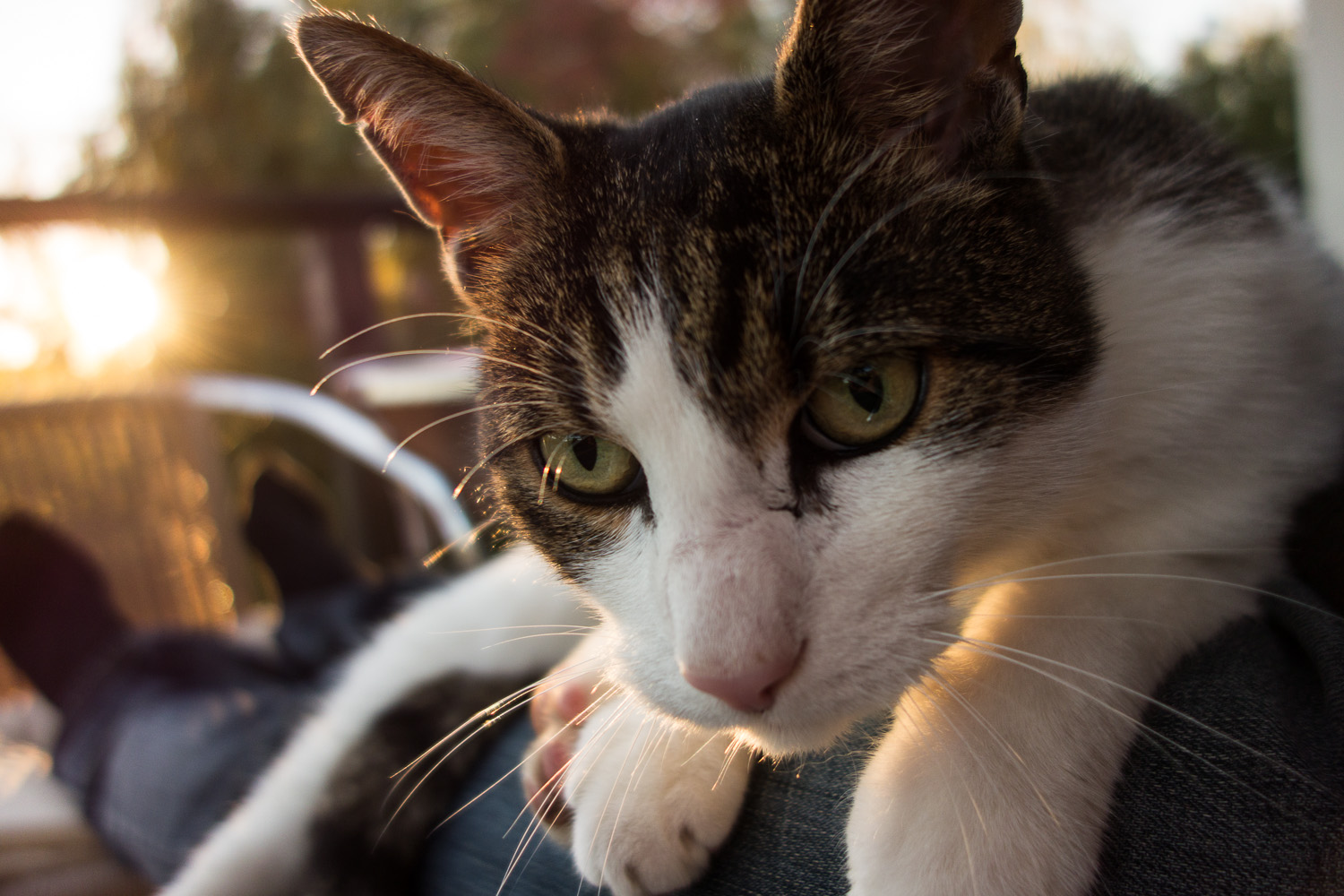 DSC-RX100 (10.4mm, f/1.8, 1/500 sec, ISO125)
DSC-RX100 (10.4mm, f/1.8, 1/500 sec, ISO125)
A picture of a cat? If you are a regular visitor of camera gear forums like dpreview you know that there is only one reason: Some serious testing of new gear. 😉
I always shot compact cameras beside my SLRs and DSLRs. My favorite small camera of all times was a Contax T2. A really small “full frame” camera with a fully retractable f2.8/38mm T* Zeiss lens. This was the perfect camera and the slides were as good as the ones I got from my Nikon SLRs and lenses.
Changing to digital it was the same. I always had a small digital camera beside my DSLRs. But there was one big difference: Image quality was compromised. Not by just a little bit but by a lot. It was clearly visible on the computer screen even at low magnification and got a lot worse on pixel level. Furthermore there was no RAW ( at least on the compacts I had used ) and the older ones had a 4:3 aspect ratio. I was never happy with it. I used a lot of different compact cameras but really liked only two.
My favorites were my Fuji F31fd and the Panasonic FX100. The Fuji F31fd was the best in low light and high ISO. 400 or 800 ASA looked good compared to all the other compacts where everything above 100 ASA was a total mess. When it came out it was the only compact camera with a decent image quality.
The other one is the Panasonic FX100. The real inventor of the X in the camera name! It has a 12MP sensor, a zoom that starts at 28mm and an image stabilizer. There was noise even at the base ISO of 80 ASA but the images had good contrast and color. Best of all: Aspect ratio can be changed to 3:2 and 16:9. My standard was 3:2 but I used 16:9 a lot too. And it looked beautiful. Gun metal grey with a dark grey Leica lens. So beautiful that I decided to get it’s dedicated brown leather case as well. Even though high ISO performance was horrible it became my taking everywhere camera.
After I got my Sony NEX 5 about 2 years ago I stopped shooting compact cameras. There was no need to compromise on image quality any longer. The NEX was compact enough especially with the 16mm and image quality was excellent. So I decided that I will never ever buy a compact camera again! Never say never again!
Here it is: My new compact camera the Sony RX100. On the left is the Panasonic FX100. As you can see: The Sony is only slightly larger.
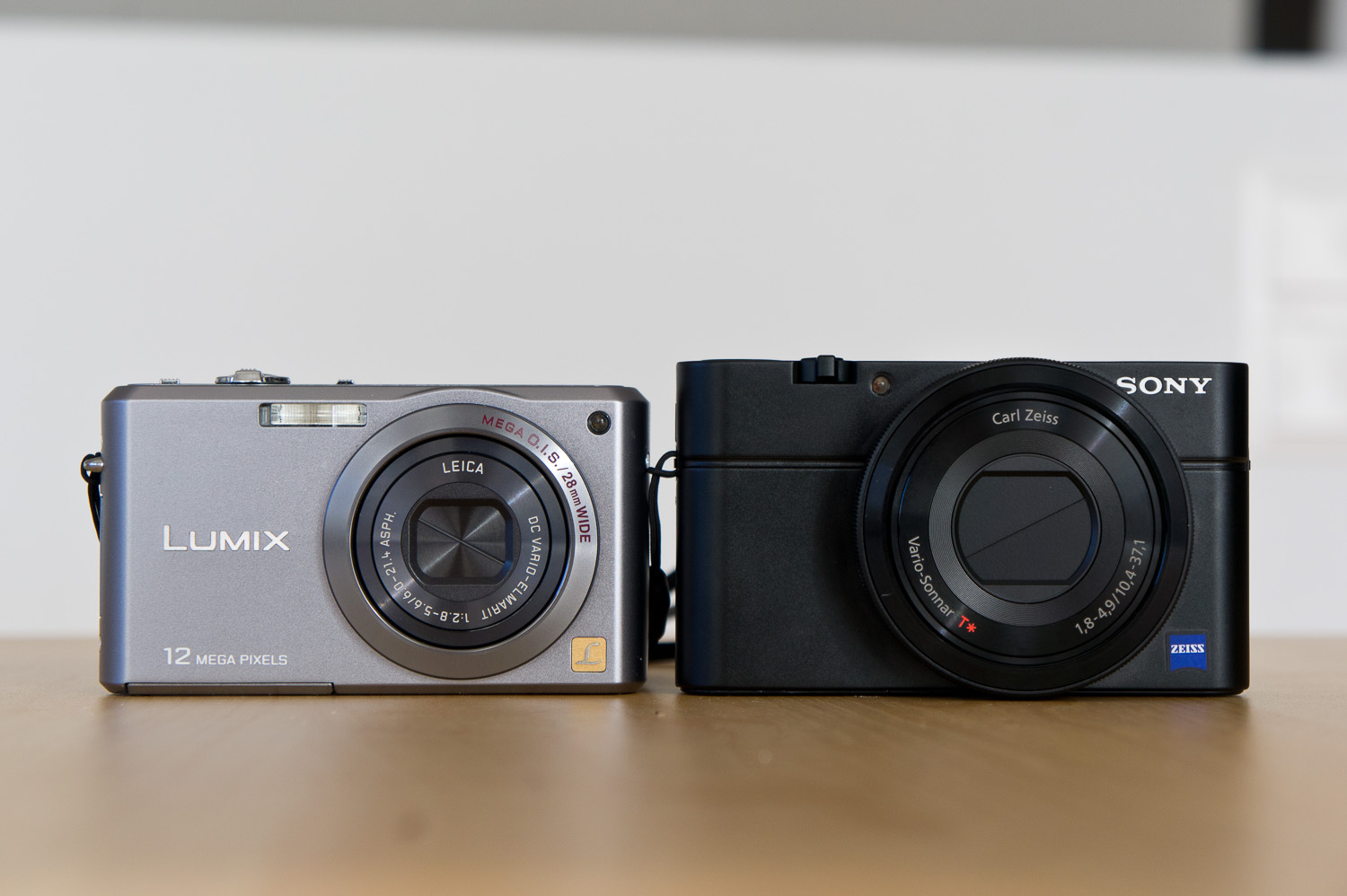 NEX-5 (52mm, f/5.6, 1/100 sec, ISO200)
NEX-5 (52mm, f/5.6, 1/100 sec, ISO200)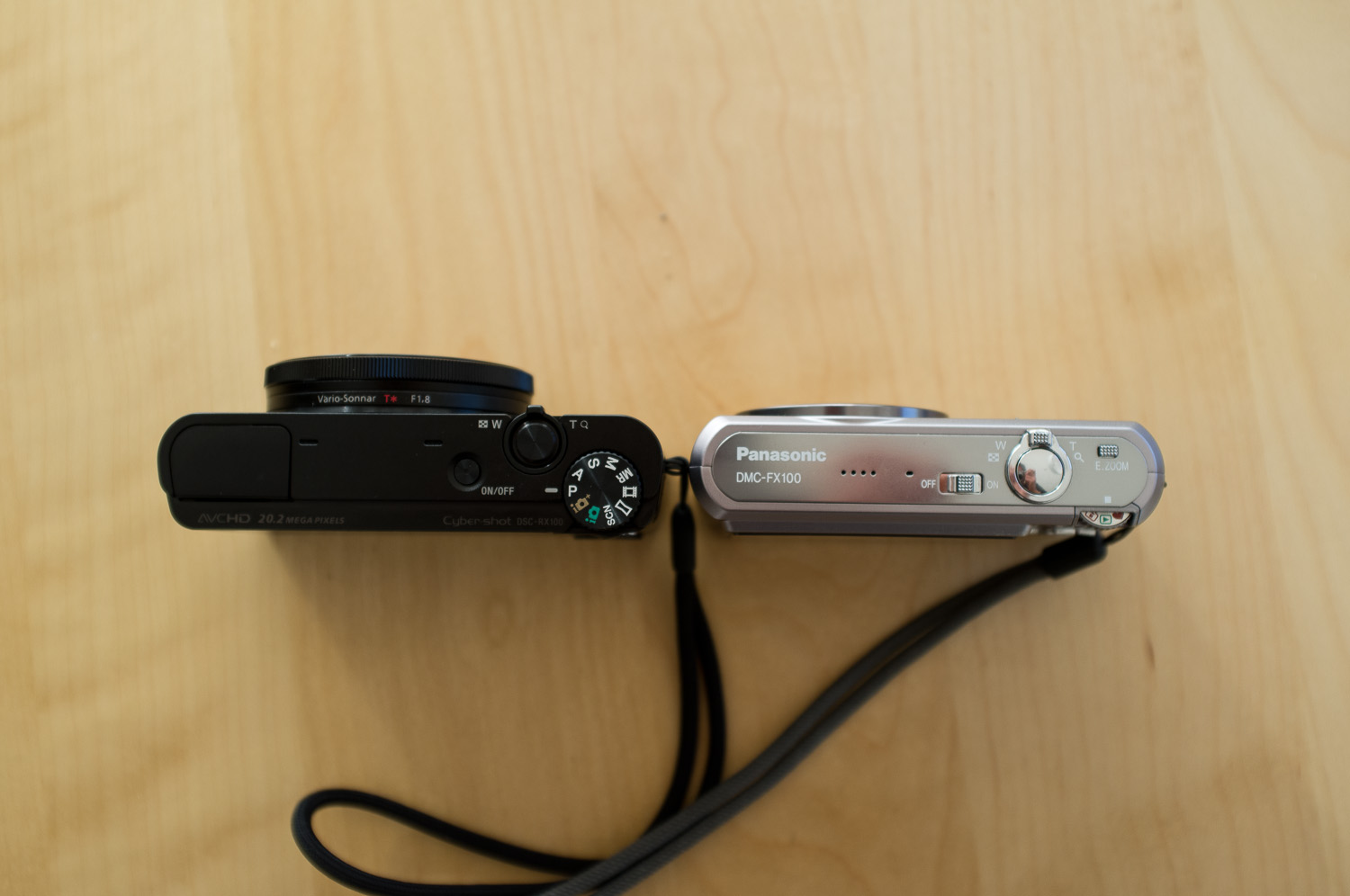 FinePix X100 (23mm, f/2.8, 1/180 sec, ISO200)
FinePix X100 (23mm, f/2.8, 1/180 sec, ISO200)
The Fuji X100 replaced the NEX most of the time also because of it’s integrated fixed 23mm ( 35mm ) lens. This lens is much more versatile than the NEX pancake. But sometimes even a Fuji X100 or a Sony NEX is too big.
Here it is next to my X100: The RX100 is significantly smaller than the already rather compact X100.
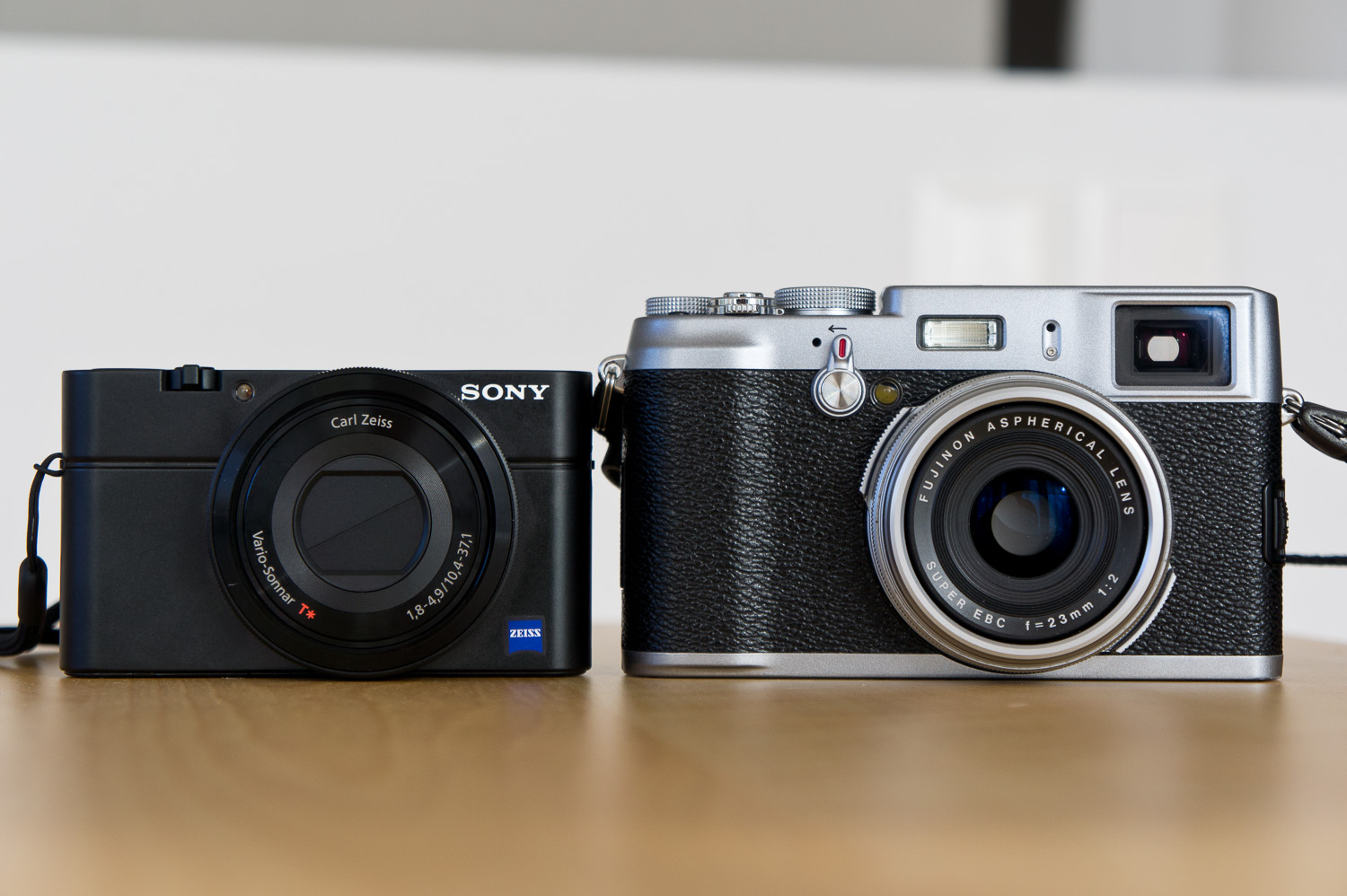 NEX-5 (52mm, f/5.6, 1/100 sec, ISO200)
NEX-5 (52mm, f/5.6, 1/100 sec, ISO200)
And here is another comparison. It’s amazing what Sony has achieved with the NEX 5. The body is roughly the size of the RX100. The kit zoom has a smaller range and is almost 2 stops slower at the wide angle but of course a lot bigger. It contradicts the small body of the NEX. The new power zoom will be an important step in the right direction. Still, the NEX series is a true master piece.
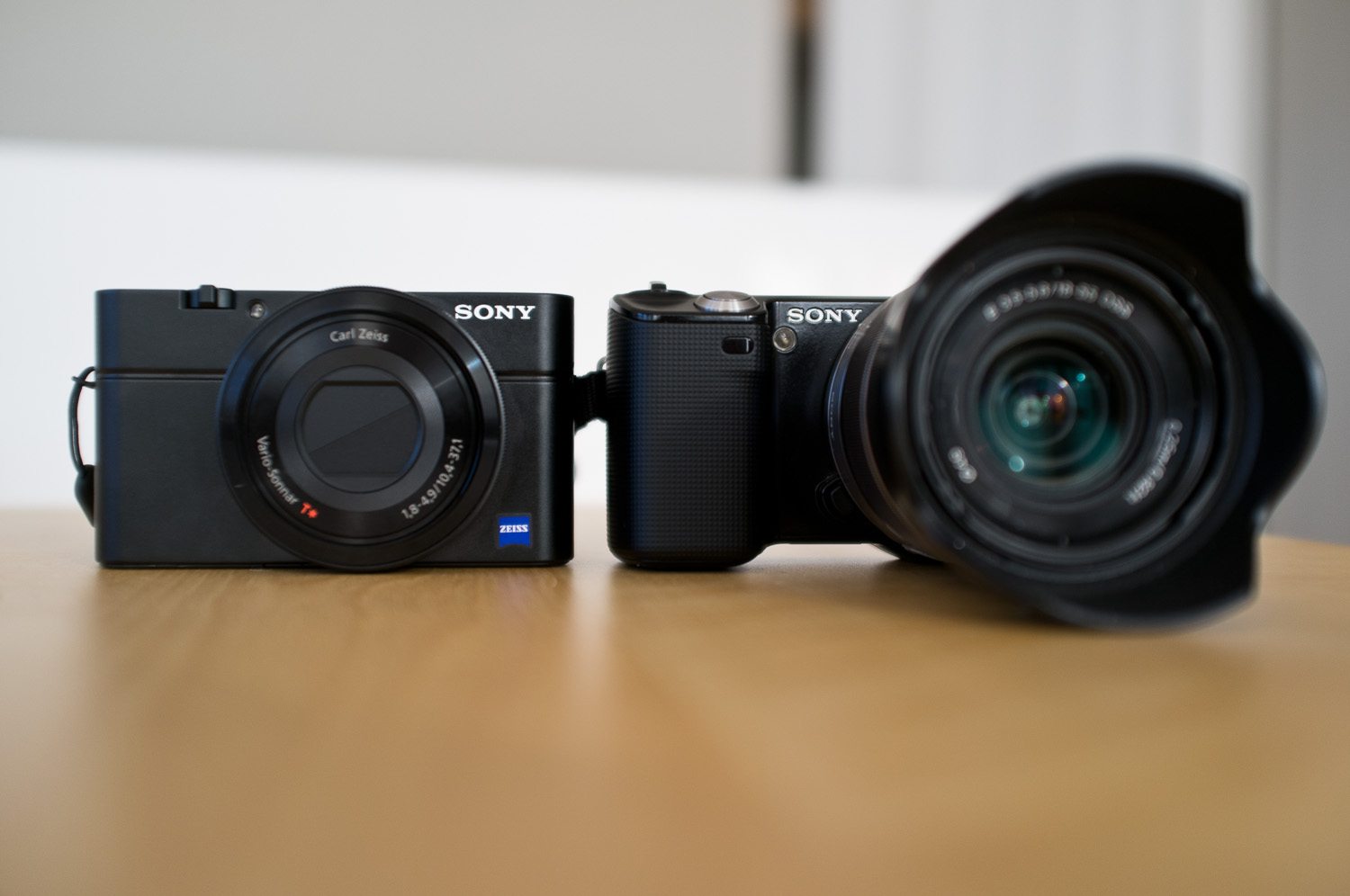 FinePix X100 (23mm, f/2, 1/450 sec, ISO200)
FinePix X100 (23mm, f/2, 1/450 sec, ISO200)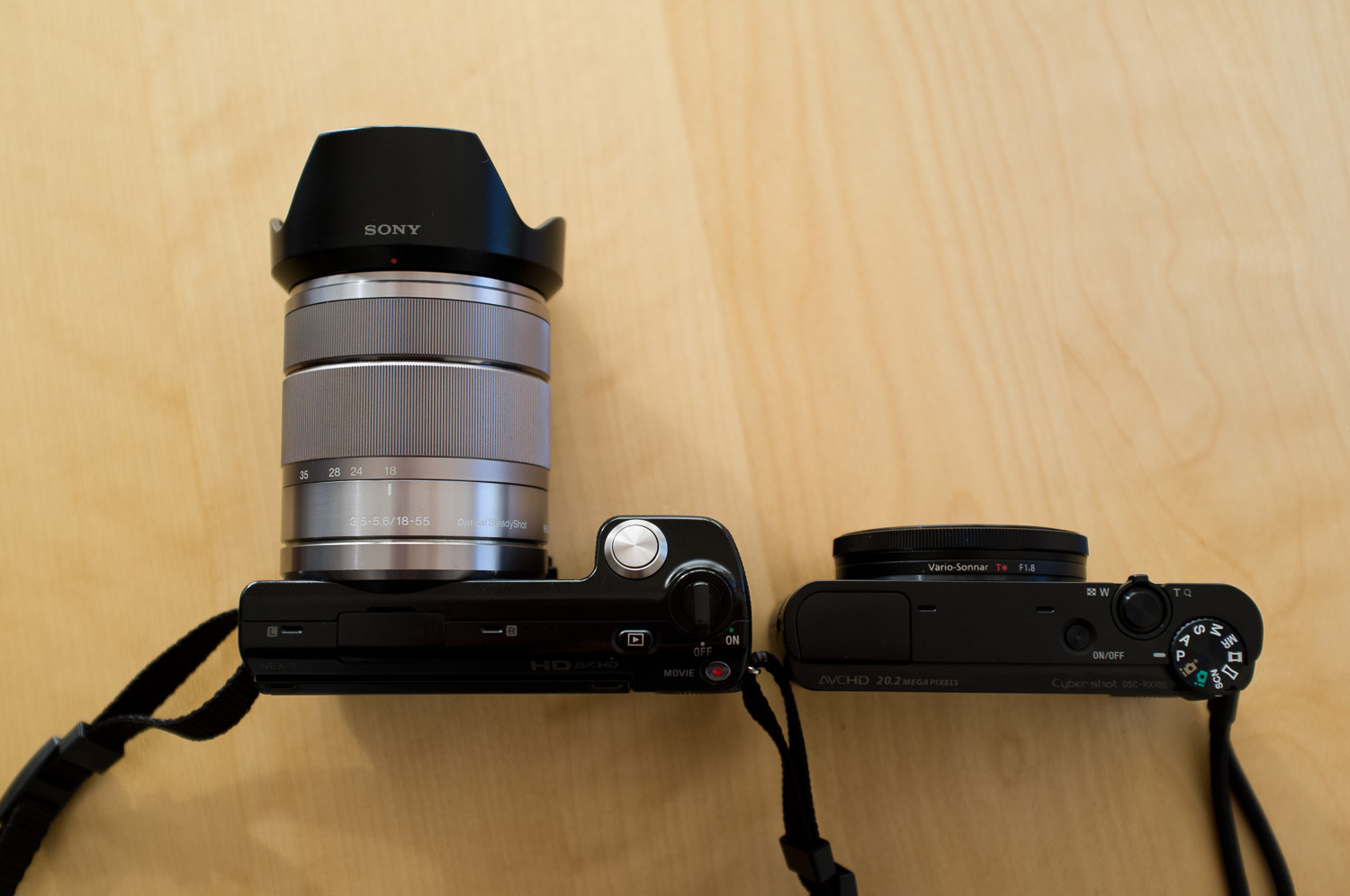 FinePix X100 (23mm, f/2.8, 1/210 sec, ISO200)
FinePix X100 (23mm, f/2.8, 1/210 sec, ISO200)
Thanks to Sony ( again ) there is a solution for all people that don’t want to carry a big camera but are not happy with the quality that they get from a normal compact camera: A compact camera with a large sensor. The sensor sits right in the middle between a typical compact camera sensor and APS-C. It’s about 4 times bigger than a compact camera sensor but still smaller than M43.
But it’s a real compact camera and it shares a lot with the Panasonic FX100:
- 28-100 zoom with IS designed by Zeiss ( the one in the FX100 is designed by Leica )
- lens retracts and has a built in lens cover
- zoom lever around the shutter button
- very high resolution
- very good build quality
- cool looks, size and name
But there is one big difference: Sensor size! With an almost 4 times larger sensor the pixel density is less than half of that in the Panasonic. Combine that with another 5 years of sensor development and you can expect superior image quality and significantly better high ISO quality too. And compared to the image quality of the Panasonic that’s true.
Why that very long intro? Because I have to admit that I was a little disappointed when I checked the first images on my computer screen. With all that hype on the internet I simply expected too much. I expected the impossible. I expected this camera to perform like my Fuji X100 or my Canon 5D and in short: of course it doesn’t. The X100 is one of the best APS-C cameras today and the 5D, though old, is still top thanks to it’s full frame sensor. Sensor technology has made big steps within the last 5 years but this is simply asking too much.
I haven’t shot with anything but my 5d, X100 and my NEX 5 for more than two years now and I got used to their quality. I haven’t tested compacts, Nikon’s 1 series or not even M43 cameras. I got used to full frame and top grade APS-C files. It’s no wonder I wasn’t exited when I saw the files first. But without revealing too much I think that there is a very good chance for a love at second sight.
